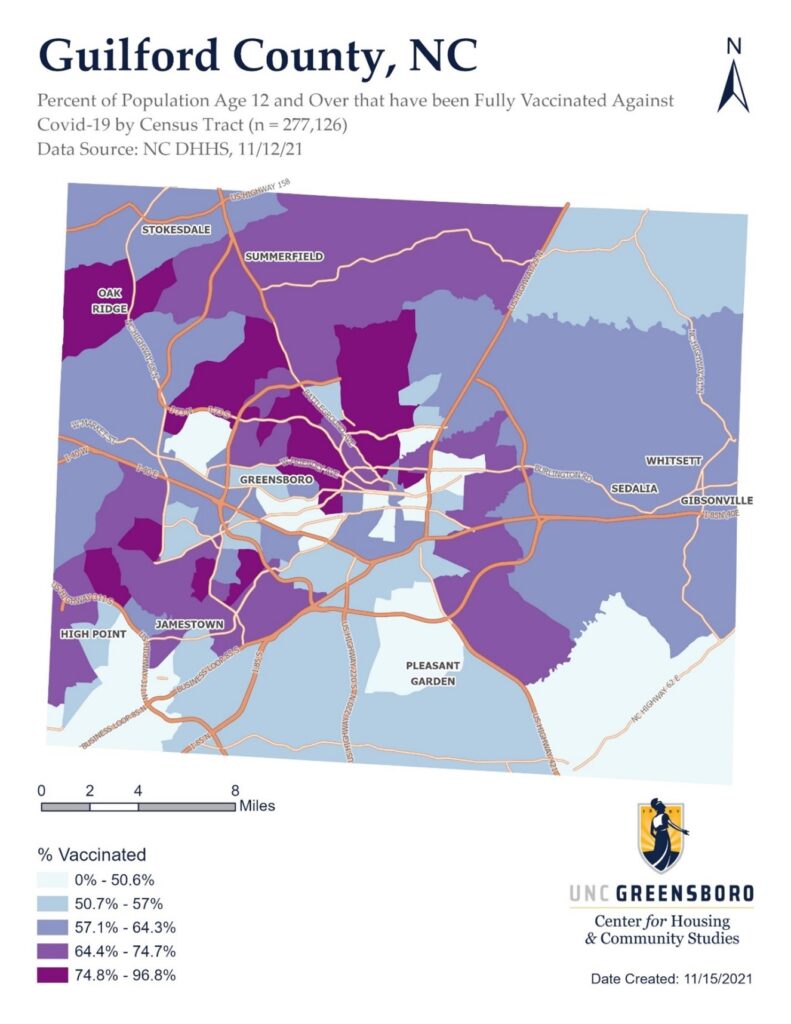Covid-19 Vaccine Messaging
This study was conducted by the UNCG Department of Health Education and the UNCG Center for Housing and Community Studies in response to a request from Guilford County Department of Health and Human Services Director. The project includes an extensive review of the literature on vaccine hesitancy, interviews and focus groups with local stakeholders and community members, field surveys at vaccine clinics and door-to-door in ‘hot spot’ neighborhoods, and an online survey with more than 1,700 respondents in the County.
The goal of the project was to explore COVID-19 vaccination rates and causes for disparities in vaccination by race, ethnicity, national origin, sex and gender, disability status, age, income, geography, and other socio-economic and cultural factors. This assessment may be used by Guilford County DHHS and related organizations to determine priorities, make improvements, or allocate resources for health messaging and better vaccine coverage especially in vulnerable populations and those with existing health disparities. The study identifies drivers of COVID-19 vaccine hesitancy.
As of Dec 23, 2021, there were a total of 73,197 confirmed COVID-19 cases and 932 deaths attributed to the disease. There are currently 2,345 active cases documented in Guilford County with 105 hospitalizations. It is anticipated that with the recent discovery of the Omicron variant, that the numbers will soon go up. Only about 58% of Guilford County residents are fully vaccinated. We see that rates of vaccination are highest in the areas north and northwest of Greensboro, in the Oakridge area, in some areas of Jamestown, and in north High Point (see Fig next).
During this study, we have tracked vaccinations at the census tract and block group levels using both data from the North Carolina Department of Health and Human Services (DHHS) and the Guilford County Division of Public Health. Rates of change are being seen primarily in neighborhoods in south High Point, and south and east Greensboro where there are higher percentages of lower-income and non-white residents. These residents were most hesitant at first about vaccination and still have lower than average vaccination rates due to structural issues, misinformation, lack of trust, negative healthcare experiences, and other factors discussed previously in this report.
Now, more than ever, it is proving necessary that individuals who are not vaccinated should seek vaccination and those who are already vaccinated get a booster. The US Centers for Disease Control and Prevention recommends “that everyone 5 years and older protect themselves from COVID-19 by getting fully vaccinated. CDC recommends that everyone ages 18 years and older
